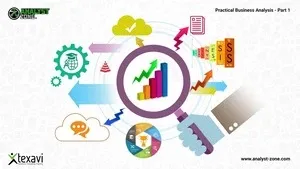



 Tech & IT
Tech & IT
 Business
Business
 Coding & Developer
Coding & Developer
 Finance & Accounting
Finance & Accounting
 Academics
Academics
 Office Applications
Office Applications
 Art & Design
Art & Design
 Marketing
Marketing
 Health & Wellness
Health & Wellness
 Sounds & Music
Sounds & Music
 Lifestyle
Lifestyle
 Photography
Photography
More Learnfly
Business Solution Become an InstructorSPM (Strategic Procurement Master) is a program designed to help procurement professionals develop strategic skills and knowledge to enhance their ability to contribute to the success of their organizations. The program aims to help participants understand the latest trends and best practices in procurement and supply chain management, and how to apply them in real-world scenarios.












Learn more topics in various categories at one place. Explore unlimited courses in other categories and up-skill yourself today.

 Jazeb Akram
Jazeb Akram 4.2 771161 Beginner Level

 John Hedengren
John Hedengren 4.1 569066 All Level

 Ranjan Pandey
Ranjan Pandey 4.1 346732 All Level

 Muhammad Ahsan Pervaiz
Muhammad Ahsan Pervaiz 4.2 101339 All Level

 Pieter Vliegenthart
Pieter Vliegenthart 4.6 100919 All Level

 Jerome P.
Jerome P. 4.8 100882 All Level

 Senol Atac
Senol Atac 4.9 100095 All Level

 Vikas Munjal
Vikas Munjal 4.8 100066 Beginner Level

 Avinash A
Avinash A 4.8 100018 All Level

 Prabh Kirpa Classes
Prabh Kirpa Classes7 Lectures All Level


18 Lectures All Level
.jpg)
 Prabh Kirpa Classes
Prabh Kirpa Classes6 Lectures All Level

 Fredrick Ezeh
Fredrick Ezeh19 Lectures All Level

 Rufus Ajgaonkar
Rufus Ajgaonkar48 Lectures All Level
.jpg)
 Rufus Ajgaonkar
Rufus Ajgaonkar41 Lectures All Level

 Nancy Mouton NYNCA
Nancy Mouton NYNCA7 Lectures All Level

 Nancy Mouton NYNCA
Nancy Mouton NYNCA6 Lectures All Level
-min.png)
 Islam Arid Quality Capsule
Islam Arid Quality Capsule25 Lectures All Level

 Prof. Konstantinos Nikolopoulos
Prof. Konstantinos Nikolopoulos65 Lectures All Level

 Dr.Zaher B. Alabdo
Dr.Zaher B. Alabdo6 Lectures All Level

 Islam Arid Quality Capsule
Islam Arid Quality Capsule77 Lectures All Level

 Islam Arid Quality Capsule
Islam Arid Quality Capsule202 Lectures All Level

 LinCademy Training
LinCademy Training22 Lectures All Level
.png)
 Martin Semerad
Martin Semerad104 Lectures All Level

 LinCademy Training
LinCademy Training10 Lectures All Level

 Mark Grey
Mark Grey9 Lectures All Level

 Mark Grey
Mark Grey10 Lectures All Level

 Zenith Academics
Zenith Academics16 Lectures All Level
.jpg)
 Greg Henriques
Greg Henriques18 Lectures All Level

 Daniel Alexandru Petrescu
Daniel Alexandru Petrescu8 Lectures All Level

 Daniel Alexandru Petrescu
Daniel Alexandru Petrescu12 Lectures All Level

 SkillsOnDemand .
SkillsOnDemand .24 Lectures All Level

 Obalim Esedebe
Obalim Esedebe15 Lectures All Level

 Dr. Abhishek Tiwari
Dr. Abhishek Tiwari15 Lectures All Level

 Dr Bart Jaworski
Dr Bart Jaworski84 Lectures All Level

 Svetlina Al-Anati (MSc Eng, CSM, CSPO, SAFe 5.0 SA, LeSS, CSSGB)
Svetlina Al-Anati (MSc Eng, CSM, CSPO, SAFe 5.0 SA, LeSS, CSSGB)17 Lectures All Level

 Obalim Esedebe
Obalim Esedebe19 Lectures All Level

 Obalim Esedebe
Obalim Esedebe37 Lectures All Level

 Robert Freeman
Robert Freeman29 Lectures All Level

 Robert Freeman
Robert Freeman10 Lectures All Level

 Robert Freeman
Robert Freeman13 Lectures All Level

 Robert Freeman
Robert Freeman15 Lectures All Level

 Prof. Paul Cline
Prof. Paul Cline16 Lectures All Level

 Prof. Paul Cline
Prof. Paul Cline14 Lectures All Level

 Prof. Paul Cline
Prof. Paul Cline10 Lectures All Level

 Yuri Braz
Yuri Braz75 Lectures All Level

 Blair Cook
Blair Cook5 Lectures All Level

 Blair Cook
Blair Cook7 Lectures All Level

 Blair Cook
Blair Cook7 Lectures All Level

 Blair Cook
Blair Cook5 Lectures All Level

 Blair Cook
Blair Cook8 Lectures All Level

 Blair Cook
Blair Cook9 Lectures All Level

 Mike Clayton
Mike Clayton25 Lectures All Level

 Jimmy Mathew
Jimmy Mathew7 Lectures All Level

 Pardha Mantravadi
Pardha Mantravadi28 Lectures All Level

 Ibrahim Al-Tirhi Al-Tirhi
Ibrahim Al-Tirhi Al-Tirhi19 Lectures All Level
Strategic planning is a systematic process that organizations use to define their direction and make decisions on allocating resources to pursue this direction. It involves setting goals, assessing the external environment, and developing strategies to achieve long-term success.
Strategic planning provides a roadmap for organizations, aligning their efforts with a clear vision and mission. It helps prioritize activities, allocate resources efficiently, and adapt to changes in the external environment, fostering a proactive and future-focused approach.
Strategic planning typically includes components such as defining organizational values, establishing a mission statement, conducting a SWOT analysis (Strengths, Weaknesses, Opportunities, Threats), setting clear objectives, and developing actionable strategies.
Strategic plans should be dynamic documents that are regularly reviewed and updated. The frequency depends on the industry and the pace of change. Annual reviews are common, but organizations may conduct more frequent assessments in rapidly evolving environments.
Strategic plans need to strike a balance between being flexible enough to adapt to unforeseen changes and providing a structured framework for decision-making. This balance ensures organizations can respond to emerging opportunities and challenges while staying focused on long-term objectives.





